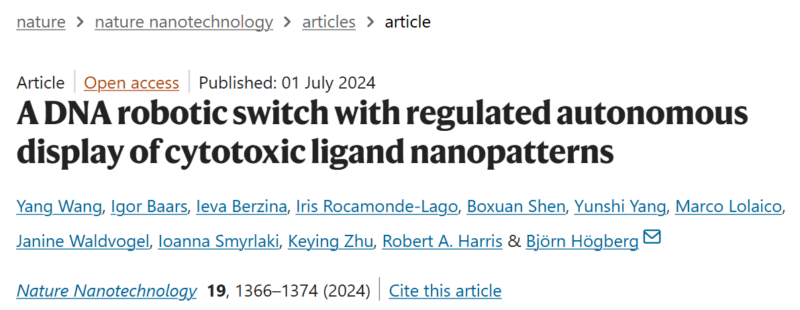Hung Trinh, Senior VP of Operations at Seneca Therapeutics and CMC/MFG Consultant and Managing Director at Vertex Biopharm Consulting, shared a post on LinkedIn about a paper by Yang Wang et al. published in Nature Nanotechnology:
“Nanorobot with hidden weapon kills cancer cells.
Researchers at Karolinska Institute in Sweden have developed nanorobots that kill cancer cells in mice. The robot’s weapon is hidden in a nanostructure and is exposed only in the tumour microenvironment, sparing healthy cells. The study is published in the journal Nature Nanotechnology.
Researchers have developed nanorobots that kill cancer cells in mice. The robot’s weapon is hidden in a nanostructure and is exposed only in the tumour microenvironment, sparing healthy cells.
The clustering of death receptors (DRs) at the membrane leads to apoptosis. With the goal of treating tumours, multivalent molecular tools that initiate this mechanism have been developed. However, DRs are also ubiquitously expressed in healthy tissue.
Here we present a stimuli-responsive robotic switch nanodevice that can autonomously and selectively turn on the display of cytotoxic ligand patterns in tumour microenvironments. We demonstrate a switchable DNA origami that normally hides six ligands but displays them as a hexagonal pattern 10 nm in diameter once under higher acidity.
This can effectively cluster DRs and trigger apoptosis of human breast cancer cells at pH 6.5 while remaining inert at pH 7.4. When administered to mice bearing human breast cancer xenografts, this nanodevice decreased tumour growth by up to 70%. The data demonstrate the feasibility and opportunities for developing ligand pattern switches as a path for targeted treatment.”
Title: A DNA robotic switch with regulated autonomous display of cytotoxic ligand nanopatterns
Authors: Yang Wang, Igor Baars, Ieva Berzina, Iris Rocamonde-Lago, Boxuan Shen, Yunshi Yang, Marco Lolaico, Janine Waldvogel, Ioanna Smyrlaki, Keying Zhu, Robert A. Harris, Björn Högberg
You can read the Full Article in Nature Nanotechnology.

More posts featuring Hung Trinh.
